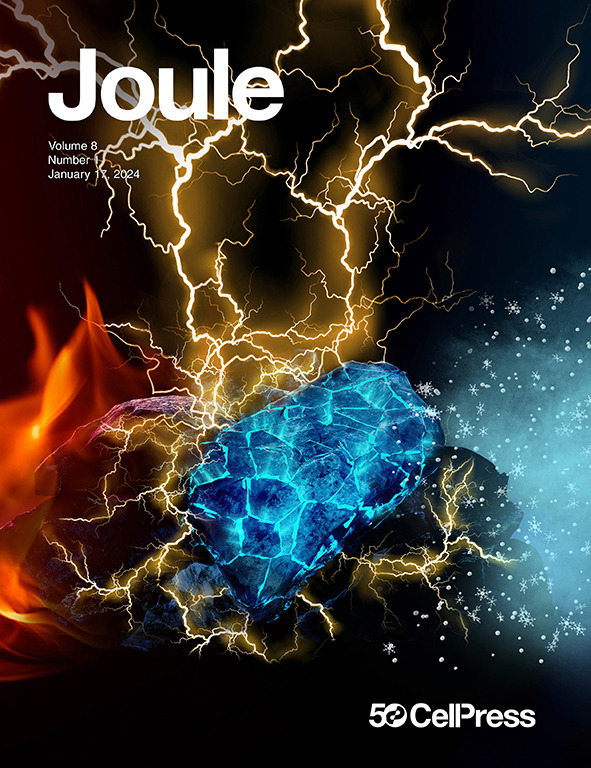Aqueous zinc-iodine batteries with ultra-high loading and advanced performance
IF 35.4
1区 材料科学
Q1 CHEMISTRY, PHYSICAL
引用次数: 0
Abstract
Aqueous zinc-iodine (Zn-I2) batteries, leveraging abundant resources and inherent safety, face commercialization challenges due to low cathode loading and iodine sublimation in traditional fabrication methods. We introduce a dry electrode preparation technique that significantly enhances the areal capacity to 15.8 mA h cm−2 (ZnI2 loading >100 mg cm−2), far exceeding previous Zn-I2 and commercial Li-ion batteries (∼3–5 mA h cm−2). This method not only increases cathode loading but also reduces polyiodides' shuttle effects and self-discharge rates, achieving a low discharge rate of 11.16% over 168 h. To address zinc-related issues at high loadings, 1,3,5-trioxane is added to the electrolyte to form a flexible polymer solid electrolyte interphase, preventing zinc dendrite formation. Our approach enables an A h-level pouch cell with remarkable cycling stability, maintaining 88.6% capacity after 750 cycles at 1 C at a high areal capacity of 15.8 mA h cm−2, demonstrating potential applicability to other aqueous and halogen-based battery systems.


超高负载、性能先进的水基锌碘电池
锌-碘(Zn-I2)水基电池资源丰富且具有固有的安全性,但由于传统的制造方法存在阴极负载低、碘升华等问题,因此面临着商业化的挑战。我们介绍了一种干电极制备技术,该技术显著提高了面积容量至15.8 mA h cm - 2 (zn2负载>;100 mg cm - 2),远远超过了以前的Zn-I2和商用锂离子电池(~ 3-5 mA h cm - 2)。该方法不仅增加了阴极负载,还降低了聚碘化物的穿梭效应和自放电率,在168 h内实现了11.16%的低放电率。为了解决高负载下与锌有关的问题,在电解质中加入1,3,5-三氧环,形成柔性聚合物固体电解质界面,防止锌枝晶的形成。我们的方法使A h级袋状电池具有出色的循环稳定性,在1c下以15.8 mA h cm - 2的高面积容量750次后保持88.6%的容量,证明了其他水基和卤素基电池系统的潜在适用性。
本文章由计算机程序翻译,如有差异,请以英文原文为准。
求助全文
约1分钟内获得全文
求助全文
来源期刊

Joule
Energy-General Energy
CiteScore
53.10
自引率
2.00%
发文量
198
期刊介绍:
Joule is a sister journal to Cell that focuses on research, analysis, and ideas related to sustainable energy. It aims to address the global challenge of the need for more sustainable energy solutions. Joule is a forward-looking journal that bridges disciplines and scales of energy research. It connects researchers and analysts working on scientific, technical, economic, policy, and social challenges related to sustainable energy. The journal covers a wide range of energy research, from fundamental laboratory studies on energy conversion and storage to global-level analysis. Joule aims to highlight and amplify the implications, challenges, and opportunities of novel energy research for different groups in the field.
 求助内容:
求助内容: 应助结果提醒方式:
应助结果提醒方式:


